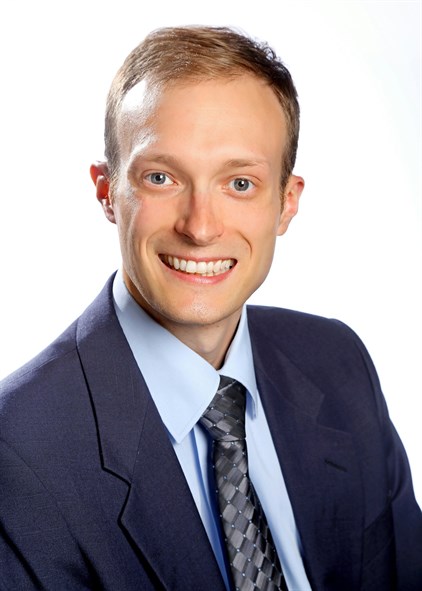
To say Dr. Andrew Till has a lot going on is an understatement. As a Metropolis Fellow postdoctoral researcher at Los Alamos National Laboratory (LANL), the Texas A&M University nuclear engineering alumnus works within the Computational Physics and Methods (CCS-2) Group on computational applications for energy discretization.
Till’s education was financed in part by the Computational Science Graduate Fellowship and the Nuclear Regulatory Commission (NRC) Fellowship program, which indirectly introduced him to his current area of research.
The NRC Fellowship program is designed to provide support for education and workforce development in the field of nuclear science within higher education institutions. The program does not provide individual scholarships or fellowships, but partners with intuitions like Texas A&M to provide funding for students with the idea it will act as an investment in the nuclear industry and workforce.
Recipients must maintain satisfactory academic progress and serve six months in a field of nuclear related employment for each full or partial year of academic support the student receives. This helps to ensure that the funds work to improve the nuclear industry in broad fashion. The program has other benefits for students. In Till’s case, the one-year fellowship he accepted encouraged him to earn both his master’s and doctoral degrees in nuclear engineering
“I found the NRC Fellowship provided me the freedom to do research without having to worry about funding sources or taking on an extra workload,” Till said. “My advisers and I were free to pursue topics based on their own merit instead of being forced to hew closely to existing projects.”
As a student, Till was a part of the computational nuclear engineering group. Till and other computationalists would develop and test numerical methods that serve the field of nuclear engineering by helping researchers understand how neutrons move and interact within a nuclear reactor.
“We care about these problems because they relate to reactor safety and performance,” Till said. “We need computers to solve these problems because there are rarely pen and paper solutions. Two criteria we often use when analyzing a method are how fast it runs on existing and upcoming computers, and how accurate it is at simulating relevant quantities for problems that we care about.”
As an NRC Fellow, Till researched energy discretization techniques for neutron transport, which is the application of computational models in determining where neutrons are in an apparatus, how quickly they are moving and where they are going to determine the behavior of a nuclear reactor core.
Till explains that neutrons are able to travel at any speed less than the speed of light, but when computationalists solve nuclear reactor problems on a computer, they often approximate the neutrons as traveling at a finite number of speeds. The computationalists take something that is continuous — the neutron speed — and make it discrete, hence discretization.
Till’s advisers Dr. Marvin Adams and Dr. Jim Morel, wanted Till to look into new ways energy discretization is done for neutrons in the context of reactor analysis. This impetus eventually led to a method that became his master’s thesis and a generalization of that became his dissertation topic. Till is currently researching further generalizations into radiation transport as a postdoctoral researcher.
“At first blush the environment [at LANL] is similar to graduate school,” Till said “I am mostly working with a mentor, with other research-oriented postdocs, or with staff members on large physics code projects. Unlike academia the national labs have an exciting mission aspect which tends to focus research and code development efforts.”
Till’s current work as a postdoctoral researcher is invested in two applications of energy discretization. One application is in time and space for problems where nuclear materials become hot enough to flow like liquids, requiring thermal radiation transport to describe how energy and momentum is transported by photons produced as blackbody radiation. This research has its application in laboratory physics and astrophysics. The other topic is an extension of Till’s doctoral work in energy discretization methods, but studies energy discretization of thermal photons instead of neutrons.
“Working at LANL in the Computational Physics and Methods group has been a dream come true,” Till said. “From a young age I wanted to work at a national lab and these past months have seen the fruition of those desires. I would encourage any current students in nuclear engineering at Texas A&M to think about interning at a national lab for a summer. It offers a third option between academia and industry.”